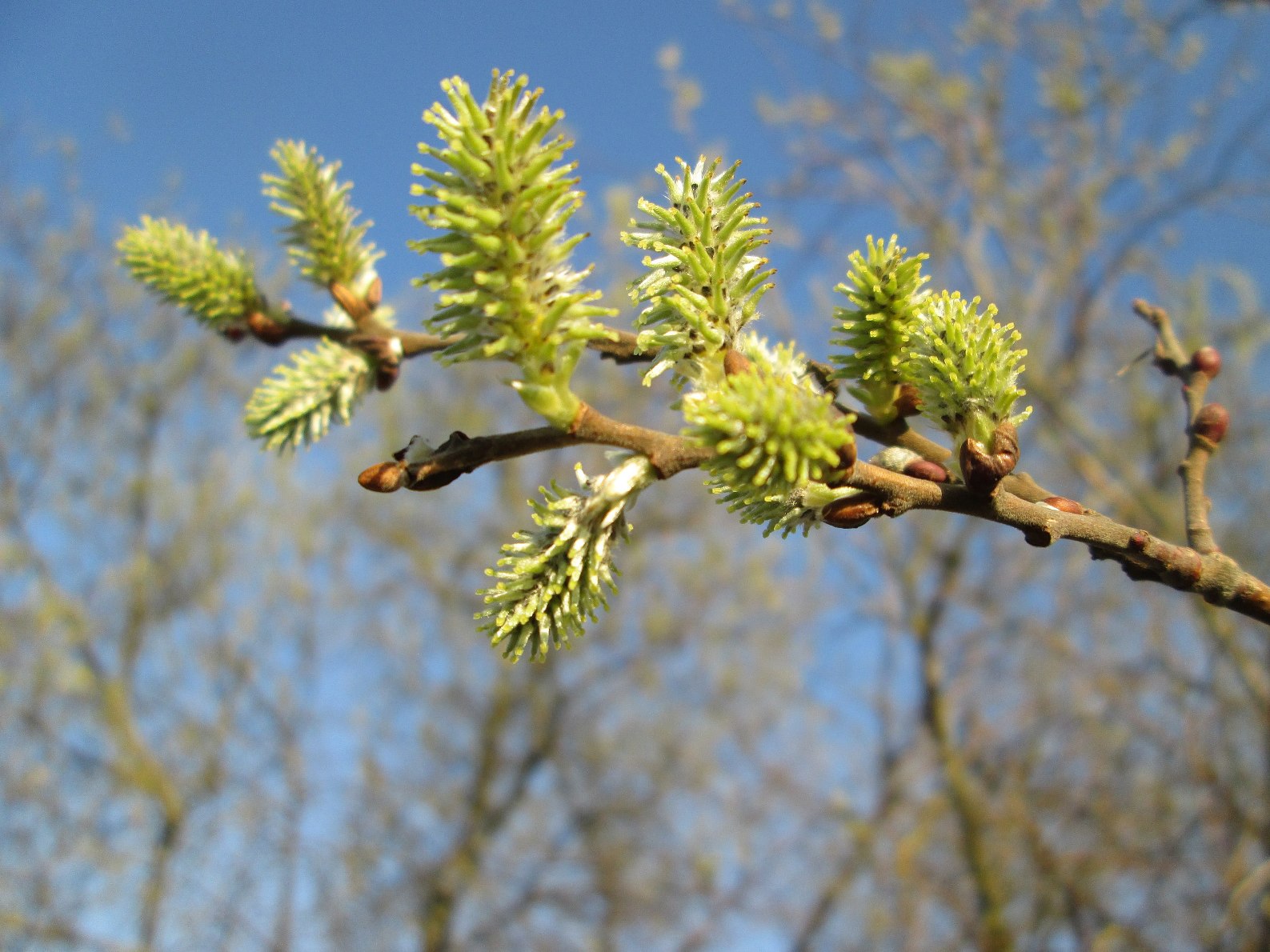Salix cinerea oleifolia
Rusty sallow, Large grey willow
Species Tolerances
- Drought Tolerance: Low
- Shade Tolerance: No
- Waterlogging Tolerance: High
- Frost Tolerance (trees from warmer climates may be frost tolerant, but their flowers may not be): Yes
- RHS Hardiness: H7
- Optimum Conditions for Growth:
A fast growing small tree which grows best on moist, nutrient poor, acidic soils, away from the immediate area of the riverbank. Occurs widely throughout the British Isles - Susceptibility to Pest/Disease:
May be susceptible to honey fungus and watermark disease

Salix cinerea ssp oleifolia im Hockenheimer Rheinbogen/ AnRo0002/ https://creativecommons.org/publicdomain/zero/1.0/deed.en
Service to Pollinators
- Summary of Service to Pollinators:
Good source of nectar and pollen for all species of bee in spring, and a good source of honeydew when aphids are active. Also provides resins/oils for honeybees to make propolis - Nectar Value to Pollinators: 2 (of 0-3)
- Honeydew Value to Pollinators: 2 (of 0-3)
- Pollen Value to Bees: 2 (of 0-3)
- Flowering Period: March-Apr
Risks
- Human Toxicity: Non-toxic
- Livestock Toxicity: Non-toxic
- Invasive Risk: No
- Suckering: No
Products
- Edible Fruit: No
- Edible Leaves: No
- Edible Sap: No
- Edible Seeds: No
- Honey, major source in UK: Yes
- For any medicinal potential, see 'Further Details' below.
- Timber: No
- Livestock Fodder: Yes
- Other Products:
Woodchip, biomass, is easy to coppice or pollard.
Utility
- Nitrogen Fixation: Yes
- Organic Matter Accumulation: Yes
- Phytoremediation: Insufficient Data
- Deacidification: Insufficient Data
- Windbreak: Yes
- Soil Erosion Control: Yes
- Shade or Shelter: Yes
- Plant Support: Insufficient Data
- Integrated Pest Management: Insufficient Data
- Wildlife Value: Yes
- Wildlife Value Summary:
Very good for biodiversity referring to invertebrate diversity feeding on the tree, especially insects. Seeds and fruit are available to a large range of birds and mammals. - Graduated Nativeness Classification ⓘ: 1 (of 1-10)1. Historic Native
2. Historic Introduction
9. Neutral Introduction
Further Details
English full name: Salix cinerea subspecies oleifolia, common name (Rusty sallow). This name refers to the ‘rusty’ coloured buds of the catkins before flowering, and is one of the best ways to identify this species which will also hybridize with other Willow species. Medicinal potential.